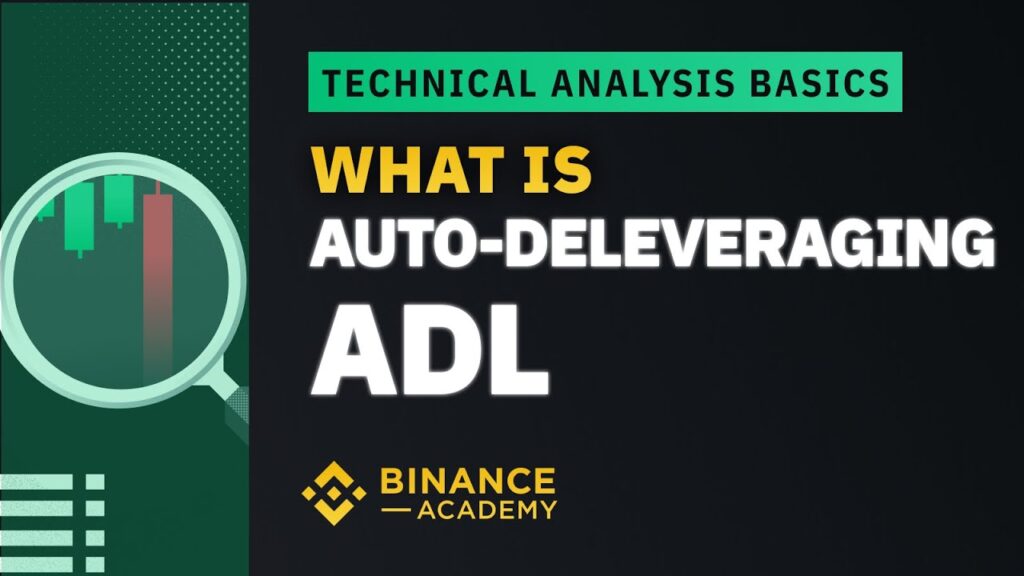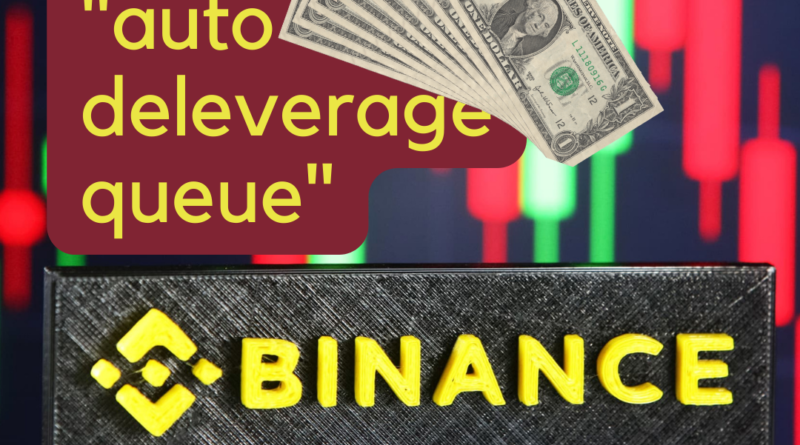Binance Auto-Deleveraging Queue
Auto-deleveraging is an essential safety measure designed to preserve the liquidity of Binance Futures. It’s activated when market prices decline below an insurance fund threshold that cannot cover bankrupt traders’ losses.
When this occurs, a queue will form with traders being prioritized according to their profit and leverage; those with greater profits and higher leveraged positions will be deleverage first.

What is “auto deleveraging queue” Binance?
ADL (Auction Deal Limitation) is a safety measure designed to safeguard an exchange against massive losses caused by leveraged trading. It works by restricting open positions held by high profit and high leverage traders. An indicator on the trading page informs traders if their position has been placed into ADL queue; trader priorities will be given priority depending on profit and leverage levels in ADL queue.
Insurance funds are intended to cover losses suffered by bankrupt traders; when these funds run dry, ADL is activated. When ADL activates, positions of opposing traders will be reduced in accordance with their queue ranking and bankruptcy price.
Traders affected by ADL will receive an email/SMS notification, and all activity orders will be cancelled and liquidation can take time; traders should prepare themselves accordingly in volatile markets. If your position falls into the ADL queue, it would be prudent to secure your profits before the ADL mechanism kicks in.
ADL queue
The ADL queue is used to organize traders according to their profit and leverage levels, with those with high profit and leverage being placed at the forefront. To reduce counterparty risk, those at the front are prioritized so their positions can be closed when forced liquidation occurs.
If an insurance fund cannot cover all the liquidation costs of a trader, ADL will activate and their positions will be deleveraging according to profit and leverage priority in order to safeguard against catastrophic loss on an exchange.
DAZCFCT provides an efficient means of activating ADL trace in z/OS. You can run it as either a PL/I program or CICS utility, with source code available at ADLCTG2; JCL/JCS scripts can be found under ADLCTG2.J. This utility assembles and links external control blocks (DBIDs) from ADL Directory files into internal control blocks while also turning ADL$PSBs into tables.
ADL priority
Auto-deleveraging (ADL) is a safety mechanism to safeguard BitMart Futures users against sudden drops in market liquidity. When the insurance fund runs dry, ADL forces liquidation of those traders with highest profits and leverage first. When long and short positions become equalized separately in ADL queue rankings. ADL indicator lights display your position relative to priority in this process in 20% increments.
ADL Engine calculates unrealized PnL and leverage ratio of trader positions and prioritizes them based on profitability; higher leveraged profits require lower priority ranking. When ADL occurs, traders who experience it are notified via email or SMS and their activity orders canceled until liquidity extractor withdraws funds to cover negative balances that cannot be covered by insurance fund. ADL also ensures sufficient liquidity on platform by collecting liquidation fees from users with negative balances which cannot be covered by insurance fund.
ADL indicator
The ADL indicator is an invaluable tool that enables traders to determine whether they are at risk of deleveraging. When this risk increases significantly, traders who need to close positions quickly or risk liquidation will see an ADL indicator appear on their charts, alerting them of impending deleveragement.
The indicator is calculated by adding up each period’s Money Flow Volume and plotting it on a chart, enabling investors to track where their “money” goes and see where any divergences between volume and price occur – either to confirm a current trend or anticipate possible future reversals.
The ADL indicator can also reveal buying and selling pressure by examining the relationship between Money Flow Multiplier and a period’s high/low price range. When the ADL line rises as prices increase, this suggests buyers are amassing; when it falls as prices decrease it indicates sellers distributing. Experienced traders look out for ADL divergence as an indication of buying or selling pressure.
You can find a tutorial video for ADL Benance here.




